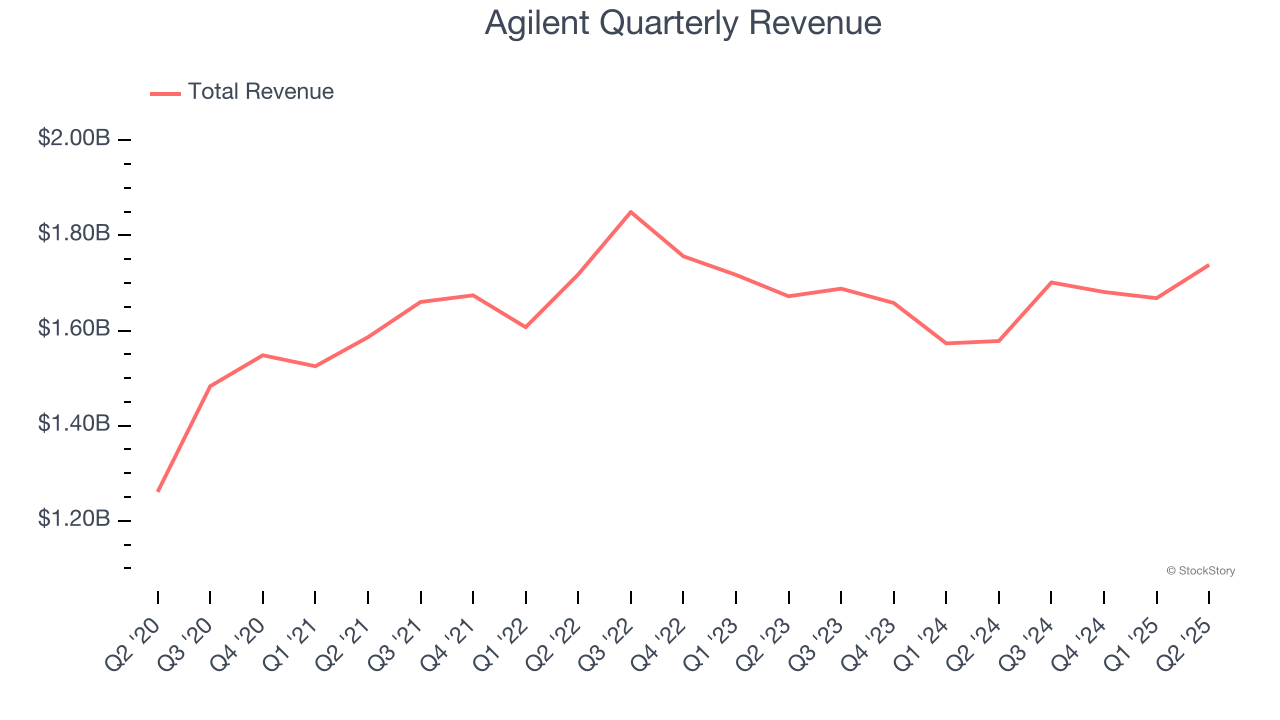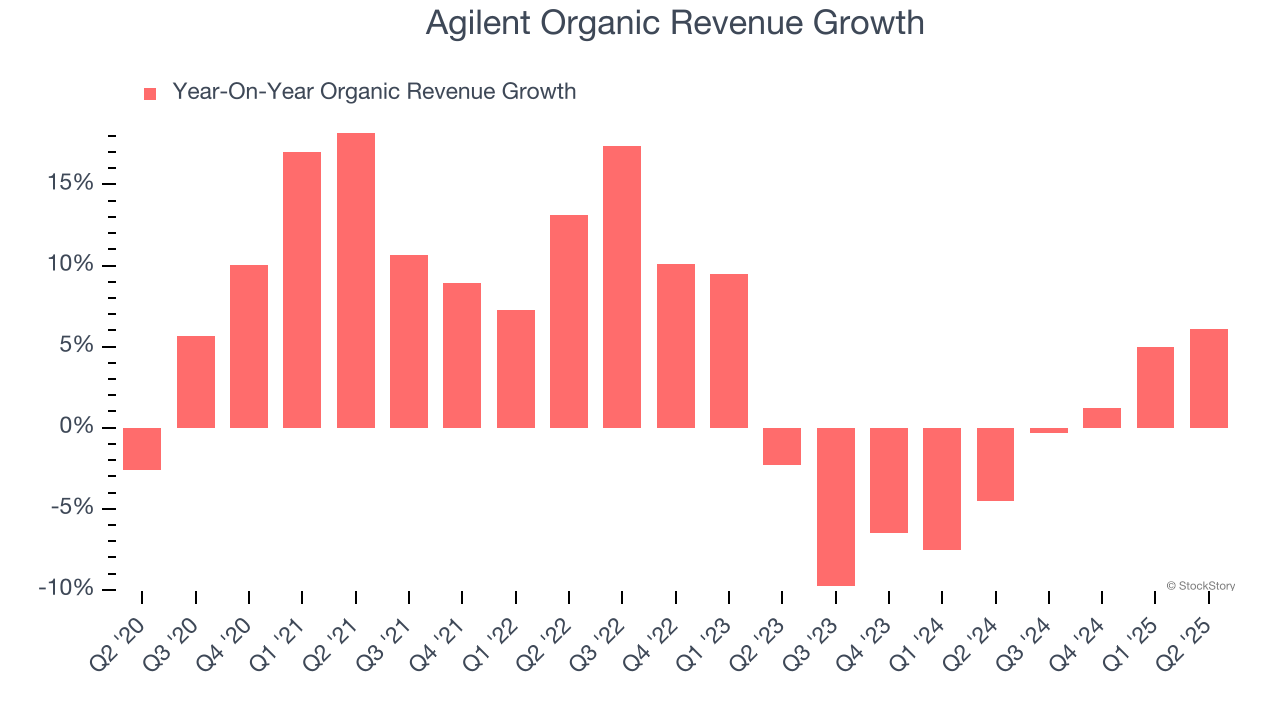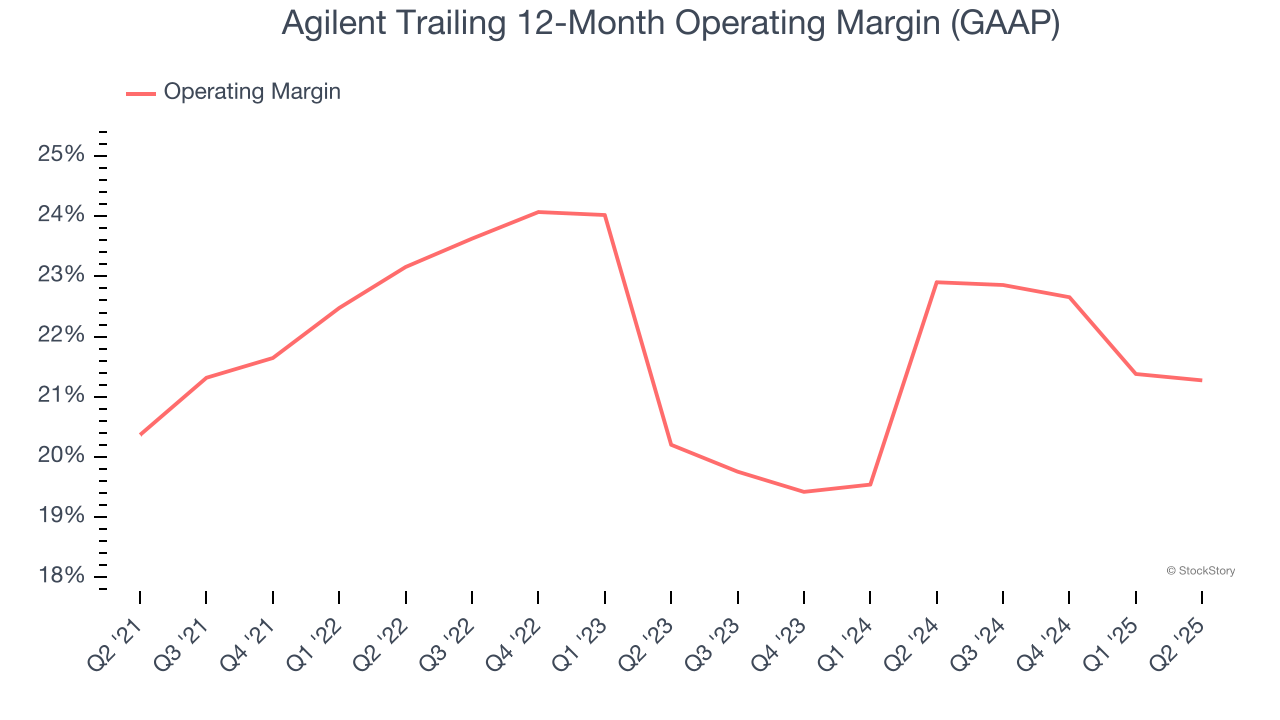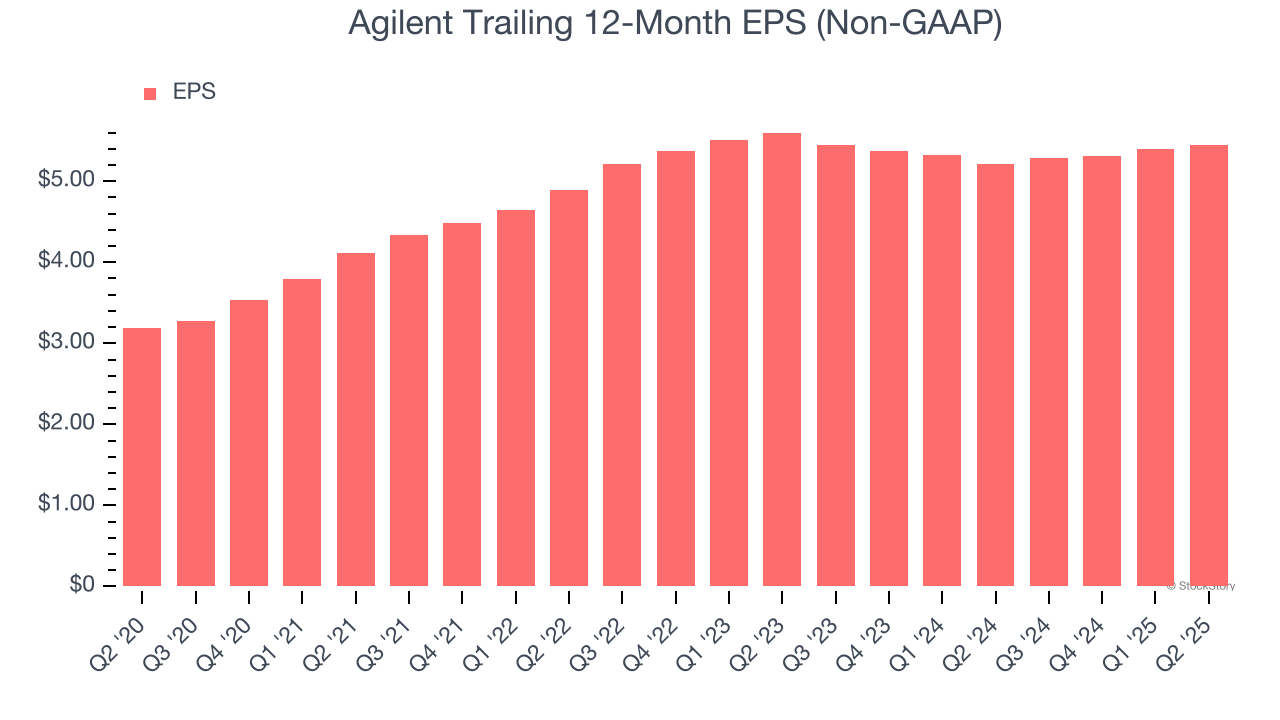
Life sciences tools company Agilent Technologies (NYSE:A) announced better-than-expected revenue in Q2 CY2025, with sales up 10.1% year on year to $1.74 billion. On top of that, next quarter’s revenue guidance ($1.83 billion at the midpoint) was surprisingly good and 3.4% above what analysts were expecting. Its non-GAAP profit of $1.37 per share was in line with analysts’ consensus estimates.
Is now the time to buy Agilent? Find out by accessing our full research report, it’s free.
Agilent (A) Q2 CY2025 Highlights:
- Revenue: $1.74 billion vs analyst estimates of $1.67 billion (10.1% year-on-year growth, 4.3% beat)
- Adjusted EPS: $1.37 vs analyst estimates of $1.37 (in line)
- Revenue Guidance for Q3 CY2025 is $1.83 billion at the midpoint, above analyst estimates of $1.77 billion
- Management reiterated its full-year Adjusted EPS guidance of $5.57 at the midpoint
- Operating Margin: 20.7%, in line with the same quarter last year
- Free Cash Flow Margin: 14.9%, down from 22.8% in the same quarter last year
- Organic Revenue rose 6.1% year on year vs analyst estimates of 3.3% growth (283.5 basis point beat)
- Market Capitalization: $33.6 billion
Company Overview
Originally spun off from Hewlett-Packard in 1999 as its measurement and analytical division, Agilent Technologies (NYSE:A) provides analytical instruments, software, services, and consumables for laboratory workflows in life sciences, diagnostics, and applied chemical markets.
Revenue Growth
A company’s long-term performance is an indicator of its overall quality. Even a bad business can shine for one or two quarters, but a top-tier one grows for years. Over the last five years, Agilent grew its sales at a mediocre 5.4% compounded annual growth rate. This was below our standard for the healthcare sector and is a poor baseline for our analysis.

Long-term growth is the most important, but within healthcare, a half-decade historical view may miss new innovations or demand cycles. Agilent’s performance shows it grew in the past but relinquished its gains over the last two years, as its revenue fell by 1.5% annually. 
Agilent also reports organic revenue, which strips out one-time events like acquisitions and currency fluctuations that don’t accurately reflect its fundamentals. Over the last two years, Agilent’s organic revenue averaged 2.1% year-on-year declines. Because this number aligns with its two-year revenue growth, we can see the company’s core operations (not acquisitions and divestitures) drove most of its results. 
This quarter, Agilent reported year-on-year revenue growth of 10.1%, and its $1.74 billion of revenue exceeded Wall Street’s estimates by 4.3%. Company management is currently guiding for a 7.7% year-on-year increase in sales next quarter.
Looking further ahead, sell-side analysts expect revenue to grow 3.9% over the next 12 months. While this projection indicates its newer products and services will catalyze better top-line performance, it is still below average for the sector.
Today’s young investors won’t have read the timeless lessons in Gorilla Game: Picking Winners In High Technology because it was written more than 20 years ago when Microsoft and Apple were first establishing their supremacy. But if we apply the same principles, then enterprise software stocks leveraging their own generative AI capabilities may well be the Gorillas of the future. So, in that spirit, we are excited to present our Special Free Report on a profitable, fast-growing enterprise software stock that is already riding the automation wave and looking to catch the generative AI next.
Operating Margin
Agilent’s operating margin might fluctuated slightly over the last 12 months but has remained more or less the same, averaging 21.6% over the last five years. This profitability was top-notch for a healthcare business, showing it’s an well-run company with an efficient cost structure.
Analyzing the trend in its profitability, Agilent’s operating margin of 21.3% for the trailing 12 months may be around the same as five years ago, but it has increased by 1.1 percentage points over the last two years.

In Q2, Agilent generated an operating margin profit margin of 20.7%, in line with the same quarter last year. This indicates the company’s overall cost structure has been relatively stable.
Earnings Per Share
We track the long-term change in earnings per share (EPS) for the same reason as long-term revenue growth. Compared to revenue, however, EPS highlights whether a company’s growth is profitable.
Agilent’s EPS grew at a remarkable 11.3% compounded annual growth rate over the last five years, higher than its 5.4% annualized revenue growth. This tells us the company became more profitable on a per-share basis as it expanded.

We can take a deeper look into Agilent’s earnings quality to better understand the drivers of its performance. A five-year view shows that Agilent has repurchased its stock, shrinking its share count by 8.7%. This tells us its EPS outperformed its revenue not because of increased operational efficiency but financial engineering, as buybacks boost per share earnings. 
In Q2, Agilent reported adjusted EPS of $1.37, up from $1.32 in the same quarter last year. This print was close to analysts’ estimates. Over the next 12 months, Wall Street expects Agilent’s full-year EPS of $5.45 to grow 9.4%.
Key Takeaways from Agilent’s Q2 Results
It was good to see HP narrowly top analysts’ revenue expectations this quarter. On the other hand, EPS was in line, as was EPS guidance for next quarter. Zooming out, we think this was a quarter without many surprises. The stock remained flat at $26.89 immediately following the results.
So do we think Agilent is an attractive buy at the current price? We think that the latest quarter is only one piece of the longer-term business quality puzzle. Quality, when combined with valuation, can help determine if the stock is a buy. We cover that in our actionable full research report which you can read here, it’s free.
